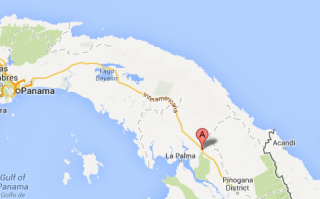Buenos Aires, Panama
![]()
![]()
![]()
![]()
![]()
![]()
![]() Click on Programs to learn more about their work in this community.
Click on Programs to learn more about their work in this community.
General Information
| Population* | 500 |
| Number of homes | 55 |
| Avg # of people per home | 9 |
| Electricity | |
| Corregimiento | Meteti |
| District | Pinogana |
| Corresponding Health Center | Meteti |
| Distance from compounds | 45 mins |
| Road conditions | Poor |
* Population does not reflect how many patients will be seen on medical
brigades as many people from surrounding communities come seeking
Medical Brigades medical attention.
Top Needs Expressed
Community leaders in Buenos Aires discussed the lack of primary health care access as the main challenge faced in their community. Also, difficulty with community access, due to poor road quality, and the lack of a community leadership committee present challenges as well. Finally, the community leaders would like to create a community gathering and recreation space.
A primary school, from kindergarten to sixth grade, sits in the middle of Buenos Aires. Approximately 70 students attend the school, where they are taught by four teachers. The school consists of seven classrooms, a lunchroom, and a computer lab. Students who go on to secondary school must attend the nearest high school in Meteti. A parent-teacher association, or "Club de Padres" is present at Buenos Aires Primary School.
In 2012 the Panamanian government organization, IDAAN, installed a turbine-based water system in Buenos Aires. The turbine itself is located 45 minutes away from the community by car. Buenos Aires rarely has water shortages, and community members consider the water pressure from the system to be sufficient. 100% of families in the community are connected to this water source, and they pay 3$ each month for the water service. The water is chlorinated as part of the water system, however, community leaders do not know how frequently the water receives chlorine. No Water Committee currently meets in the community, and community members do not filter or purify their water.
Buenos Aires does not currently have its own health center; community members instead travel to Meteti to seek care when necessary. No doctors, nurses, or other health professionals live in Buenos Aires, and dental care is not accessable. Nearly all family homes have stoves and cement floors, though none have water filters. The most common illnesses seen in Buenos Aires are amebiasis, the common cold, and fevers.
Most community members in Buenos Aires earn their income through agriculture (40%), cattle raising, other types of manual labor, and craft-making (10%). The most commonly grown crops are corn and rice. Most families construct their homeswith wood walls and metal roofs. Community members have very limited access to credit, and have a hard time opening saving accounts with nearby banks.
Buenos Aires currently lacks an Environmental Committee, and does not have a system for recycling, sustainability education, nor waste management. Community members burn their trash to dispose of it.
Legal access is very limited to community members in Buenos Aires; no lawyers currently live in the community, nor is legal training available. Community members most commonly face legal issues of child support and land titles. Only 25-50% of community members have titles for their land at this time.
No other organizations work in Buenos Aires at this time.
Medical/Dental Brigades work in Buenos Aires.
Source of information: Key informant interview and 2010 government census
Date of interview: November 2013
Last updated: December 2013
